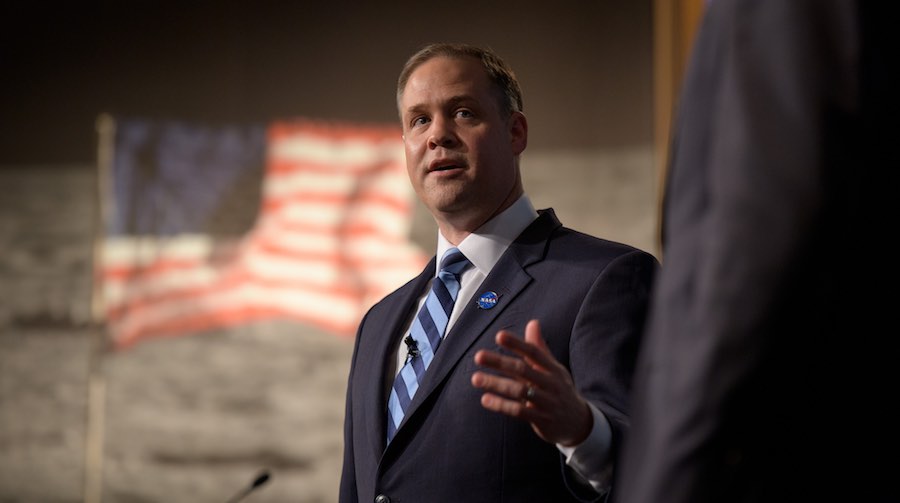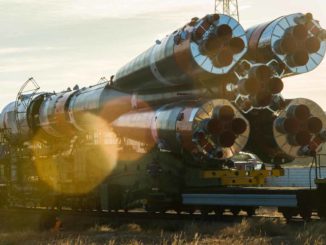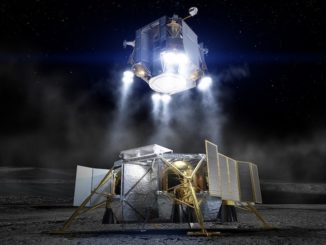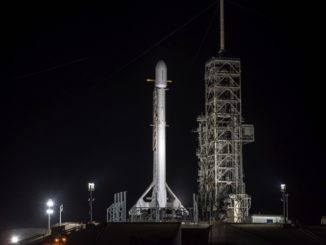
NASA Administrator Jim Bridenstine on Thursday urged space enthusiasts not to travel to the Kennedy Space Center next month to view the first launch of astronauts from the Florida spaceport since 2011, and asked people to instead watch the launch on television or online.
Preparations for the launch of SpaceX’s Crew Dragon spacecraft continue on pace for liftoff May 27. NASA astronauts Doug Hurley and Bob Behnken will be strapped into seats inside the commercial spaceship when it takes off on top of a SpaceX Falcon 9 rocket.
The launch is the culmination of a decade-long, multibillion-dollar effort by SpaceX and NASA to design, develop and test the Crew Dragon spacecraft. It will be the first time astronauts launch into orbit from U.S. soil since the retirement of the space shuttle, making next month’s launch perhaps the most highly-anticipated space mission in years to depart the Kennedy Space Center.
The crew launch is a high priority for NASA, and astronaut training, readiness reviews, and hands-on processing of the crew capsule and rocket continue amid the coronavirus pandemic, even as other agency programs encounter delays due to restrictions ordered to slow the spread of the viral disease.
“We are very excited about launching commercial crew here on May 27, this will be the first time we’ve launched American astronauts on American rockets from American soil since the retirement of the space shuttles back in 2011,” Bridenstine said Thursday. “So this is a this is a big deal for the country, it’s important for the country. This is our access to the International Space Station, which is a $100 billion investment by the American taxpayer. So we need to make sure that we have access to the International Space Station.”
But the long-awaited launch will have a different feel than anticipated. Citing concerns related to the coronavirus pandemic, NASA is expected to limit the number of news media representatives allowed to cover the launch at the Kennedy Space Center, and Bridenstine urged space enthusiasts not to flock to the Florida spaceport to watch the launch in person.
“Yes, we are moving forward. It is a mission essential function for the United States government to launch commercial crew on May 27,” Bridenstine said.
Hundreds of thousands of people flocked to Florida’s Space Coast to watch the liftoff of the final space shuttle mission in July 2011, the last time astronauts launched into orbit from U.S. soil.

“We’re asking people to join us in this launch, but to do so from home,” he said. “We’re asking people not to travel to the Kennedy Space Center … When we launch to space from the Kennedy Space Center, it draws huge, huge crowds, and that is not right now what we’re trying to do. We’re trying to make sure we have access to the International Space Station, without drawing the massive amount of crowds that we usually would for these activities.
“It’s especially important now because we haven’t done this since 2011, so the crowds are probably going to be bigger than they have been in a very long time,” Bridenstine said Thursday. “We’re asking people to stay at home, to watch from home. We want them engaged. We want them to participate. We want them to tell their friends and family, but we also want them to watch from a place that’s not the Kennedy Space Center.”
NASA has contracts with SpaceX and Boeing to develop new human-rated crew capsules to ferry astronauts to and from the space station. The privately-owned Crew Dragon and Starliner spaceships will end NASA’s sole reliance on Russian Soyuz vehicles to transport station crews.
Any restrictions on viewing the launch from locations off NASA property would fall to state and local authorities, Bridenstine said.
“We’re not going to open up the Kennedy Space Center to the public the way we normally would,” he said. “As far as the beaches and the areas around the Kennedy Space Center, those are public roads. We’re going to follow the protocols of the past, how we do crowd control around big launches.”

Employees from SpaceX, NASA and other contractors involved in the Crew Dragon launch preparations are maintaining physical distancing as much as possible, Bridenstine said.
“We have modified shift schedules,” he said. “So instead of having 12 people work on on a rocket all at the same time, we separate them out to where we’ve got four working for eight hours, a different four working for the next eight hours, and a different four working for the eight hours after that. So we’re dividing things up by shifts.
“We’re also making sure people that are in close proximity have the right personal protective equipment,” he said.
“When we think about mission control, when we launch to space, there’s a lot of people in the mission control facilities,” Bridenstine said. “We need to make sure that we are separating people as much as possible using different rooms, and in fact those rooms where people are going to be located, maybe having Plexiglas between the different stations.
“So we’re looking at all the things where we can practice the guidelines for social distancing and at the same time, launch this very important mission to the International Space Station,” he said.
Hurley and Behnken are will begin a quarantine protocol a couple of weeks before launch on the Crew Dragon’s Demo-2 mission in late May. During that time, the astronauts will only be around people with medical clearance.
The astronauts will spend several months on the space station before returning to a splashdown in the Atlantic Ocean inside the Crew Dragon spacecraft. If everything goes according to plan, NASA officials after the Demo-2 mission’s return will officially certify the Crew Dragon spaceship for regular crew rotation flights to the space station.
“I’ve stressed it over and over again to our entire workforce and our leadership teams, if there’s anybody who feels uncomfortable working on this project, they need to say something,” Bridenstine said. “We will find something else for them to do where they could work from home or they can do other things. The last thing we want to do is make anybody feel uncomfortable working on these projects, and there will be absolutely no retribution if people do want to move on to something else.
“That being said … this is a very exciting project and the NASA workforce is very excited about it,” he said. “So we’re doing everything we can to, to make sure that we’re safe as we go forward.”
Email the author.
Follow Stephen Clark on Twitter: @StephenClark1.



